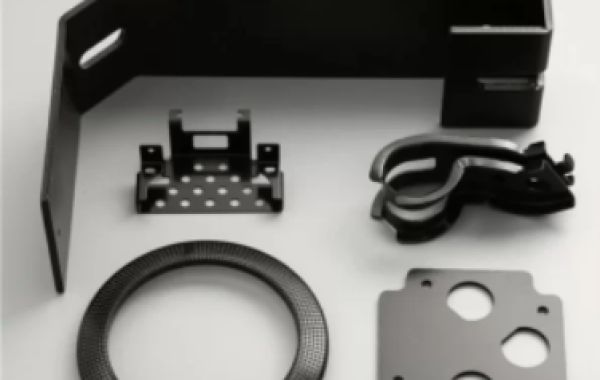Stamping is a forming process that relies on presses and dies to apply external forces to plates, strips, pipes and profiles to produce plastic deformation or separation to obtain a workpiece of the desired shape and size (stamping). Stamping and forging are both plastic processing (or pressure processing) and are collectively called forging. The blanks for stamping are mainly hot-rolled and cold-rolled steel sheets and strips.
Features Of Stamping Part
Stamped parts are mainly made of metal or non-metal sheet materials, which are processed and shaped by stamping dies with the pressure of presses.
(1). Stamped parts are manufactured by stamping on the premise that the material is not consumed much. The parts are light in weight and have good stiffness, and after the plastic deformation of the sheet, the internal organization of the metal is improved, so that the strength of the stamped parts is increased.
(2). Stamped parts have high dimensional accuracy, uniform size of parts with the same mold, and good interchangeability. It can meet the general assembly and use requirements without further mechanical processing.
(3). Stamped parts in the stamping process, because the surface of the material is not damaged, so there is a good surface quality, smooth and beautiful appearance, which provides convenient conditions for surface painting, electroplating, phosphating and other surface treatment.
Inspection Method Of Stamping Part
Touch Inspection
Wipe the surface of the outer covering with a clean gauze. The inspector needs to wear touch gloves and touch the surface of the pressed part along the longitudinal direction of the pressed part, this inspection method depends on the experience of the inspector. If necessary, the suspected area can be polished with an oil stone and verified, but this method is an effective and fast inspection method.
Oil Stone Polishing
1.First with a clean gauze to wipe the surface of the outer coverings, and then polished with oil stone (20 × 20 × 100mm or larger), there are rounded places and difficult to reach places with relatively small oil stone polishing (for example: 8 × 100mm semi-circular oil stone)
2.The choice of oil stone size depends on the surface condition (such as roughness, galvanization, etc.). It is recommended to use a fine-grained oil stone. The direction of oil stone polishing is basically along the longitudinal direction and fits well to the surface of the stamped parts, some special places can be supplemented with transverse polishing.
Flexible Gauze Sanding
Wipe the surface of the outer covering with a clean gauze cloth. Use a flexible gauze to sand along the longitudinal direction closely to the surface of the stamped part to the whole surface, any pockmarks and indentations will be easily detected.
Oiling Inspection
Wipe the surface of the outer covering with a clean gauze cloth. Then use a clean brush to apply oil evenly along the same direction to the whole outer surface of the stamped part. Put the oiled stamped parts under bright light to inspect, and it is recommended to put the stamped parts on the body position. With this method, tiny pockmarks, deflated ponds and corrugations on the stamped parts can be easily detected.
Visual Inspection
Visual inspection is mainly used to find out the appearance abnormality and macroscopic defects of the stamping parts.
Inspection By Inspection Tool
The stamping parts are put into the inspection tool and the stamping parts are inspected according to the operation requirements of the inspection tool manual.







